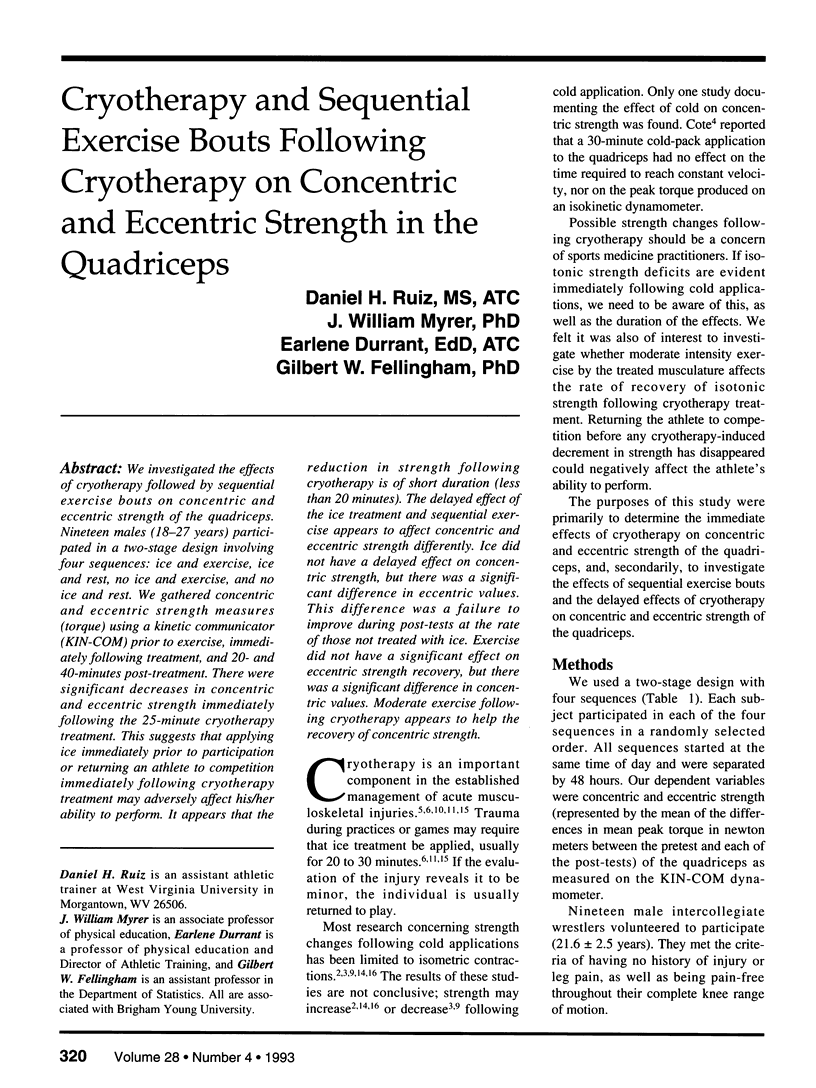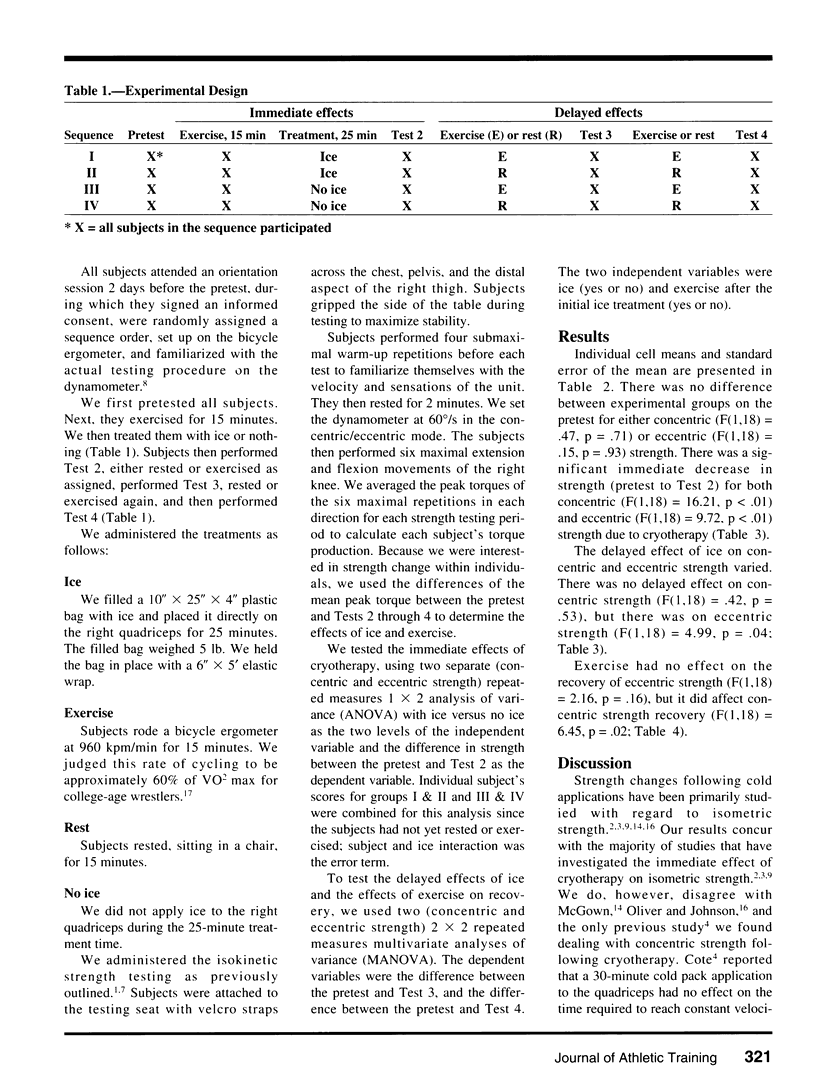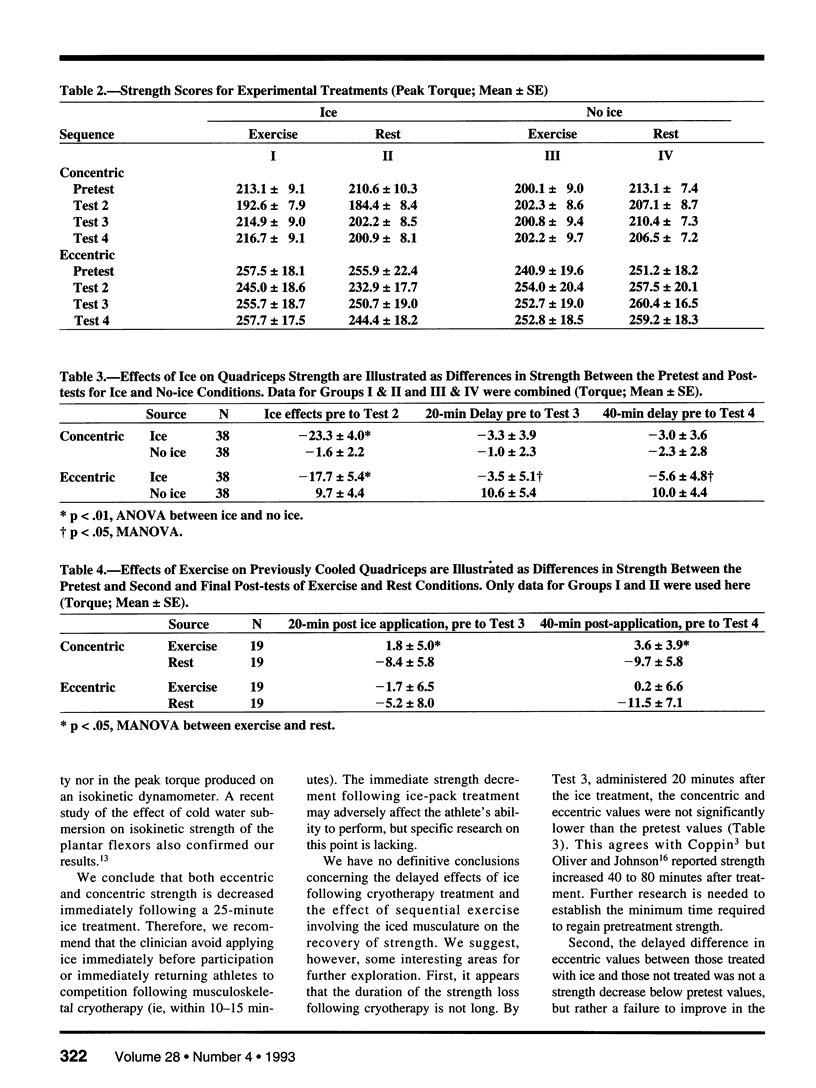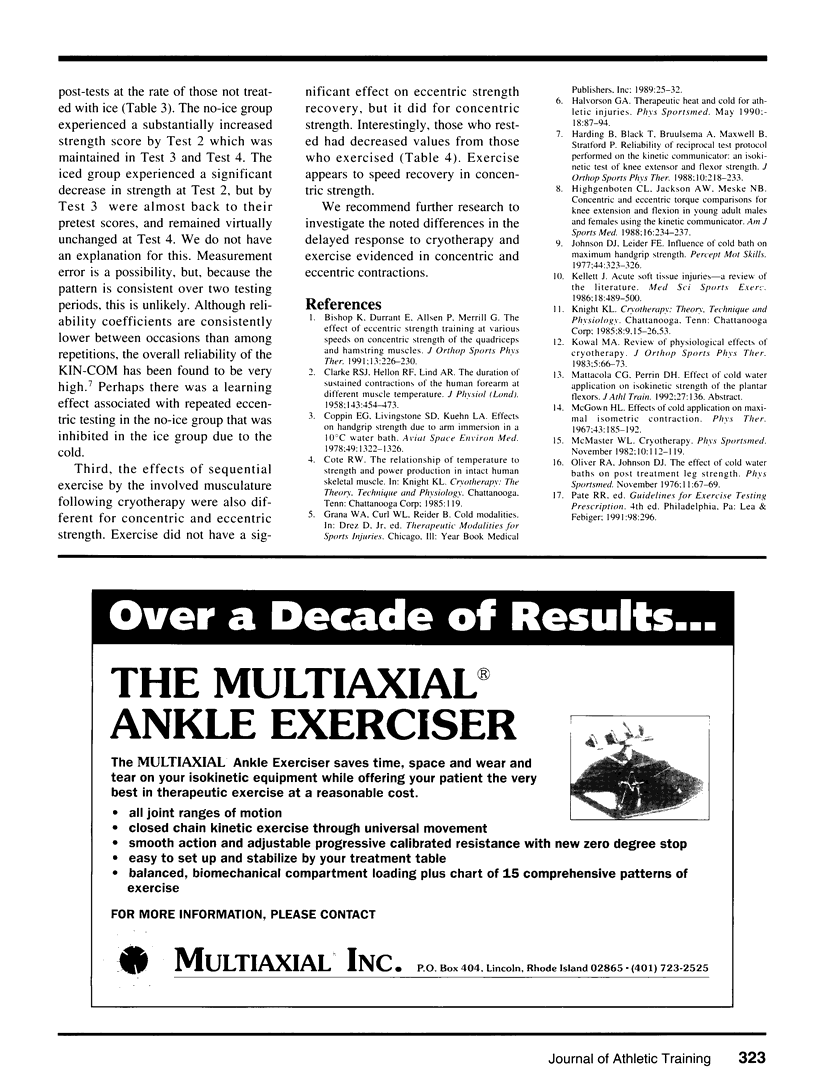Abstract
We investigated the effects of cryotherapy followed by sequential exercise bouts on concentric and eccentric strength of the quadriceps. Nineteen males (18-27 years) participated in a two-stage design involving four sequences: ice and exercise, ice and rest, no ice and exercise, and no ice and rest. We gathered concentric and eccentric strength measures (torque) using a kinetic communicator (KIN-COM) prior to exercise, immediately following treatment, and 20- and 40-minutes post-treatment. There were significant decreases in concentric and eccentric strength immediately following the 25-minute cryotherapy treatment. This suggests that applying ice immediately prior to participation or returning an athlete to competition immediately following cryotherapy treatment may adversely affect his/her ability to perform. It appears that the reduction in strength following cryotherapy is of short duration (less than 20 minutes). The delayed effect of the ice treatment and sequential exercise appears to affect concentric and eccentric strength differently. Ice did not have a delayed effect on concentric strength, but there was a significant difference in eccentric values. This difference was a failure to improve during post-tests at the rate of those not treated with ice. Exercise did not have a significant effect on eccentric strength recovery, but there was a significant difference in concentric values. Moderate exercise following cryotherapy appears to help the recovery of concentric strength.
Full text
PDF



Selected References
These references are in PubMed. This may not be the complete list of references from this article.
- CLARKE R. S., HELLON R. F., LIND A. R. The duration of sustained contractions of the human forearm at different muscle temperatures. J Physiol. 1958 Oct 31;143(3):454–473. doi: 10.1113/jphysiol.1958.sp006071. [DOI] [PMC free article] [PubMed] [Google Scholar]
- Coppin E. G., Livingstone S. D., Kuehn L. A. Effects on handgrip strength due to arm immersion in a 10 degree C water bath. Aviat Space Environ Med. 1978 Nov;49(11):1322–1326. [PubMed] [Google Scholar]
- Highgenboten C. L., Jackson A. W., Meske N. B. Concentric and eccentric torque comparisons for knee extension and flexion in young adult males and females using the Kinetic Communicator. Am J Sports Med. 1988 May-Jun;16(3):234–237. doi: 10.1177/036354658801600306. [DOI] [PubMed] [Google Scholar]
- Johnson D. J., Leider F. E. Influence of cold bath on maximum handgrip strength. Percept Mot Skills. 1977 Feb;44(1):323–326. doi: 10.2466/pms.1977.44.1.323. [DOI] [PubMed] [Google Scholar]
- Kellett J. Acute soft tissue injuries--a review of the literature. Med Sci Sports Exerc. 1986 Oct;18(5):489–500. [PubMed] [Google Scholar]
- McGown H. L. Effects of cold application on maximal isometric contraction. Phys Ther. 1967 Mar;47(3):185–192. doi: 10.1093/ptj/47.3.185. [DOI] [PubMed] [Google Scholar]


